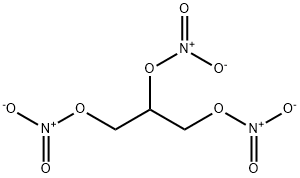1,3-Dichloro-2-propanol
Synonym(s):Glycerol-α,γ-dichlorohydrin
- CAS NO.:96-23-1
- Empirical Formula: C3H6Cl2O
- Molecular Weight: 128.99
- MDL number: MFCD00000951
- EINECS: 202-491-9
- SAFETY DATA SHEET (SDS)
- Update Date: 2024-12-18 14:08:57

What is 1,3-Dichloro-2-propanol?
Chemical properties
Colorless to light yellow liqui
Chemical properties
There are 4 isomers of dichloropropanols 1,3- dichloro-2-propanol (96-23-1) and “dichloropropanols” (26545-73-3) are citations in environmental regulations: C3H6OCl2 is a colorless viscous liquid with a chloroformlike odor. Slightly soluble in water. 1,3-Dichloro-2- propanol:
The Uses of 1,3-Dichloro-2-propanol
1,3-Dichloro-2-propanol biotransformation to epichlorohydrin by the whole cells of recombinant Escherichia coli via resin-based in situ product removal has been investigated. It is used in the synthesis of glycerol, in the production of plastics and textiles and in the synthesis of pharmaceuticals. Also used as a solvent and as a cement for celluloid. It is also present in some foods, e.g. soy sauce, soup spices and instant soups, from hydrolization of proteins.
The Uses of 1,3-Dichloro-2-propanol
A labelled chloropropanol which shows toxic effects.
The Uses of 1,3-Dichloro-2-propanol
A chloropropanol which shows toxic effects.
Definition
ChEBI: 1,3-dichloropropan-2-ol is a secondary alcohol that is isopropanol in which one hydrogen of each methyl group is substituted by a chlorine. A liquid at room temperature (melting point -4℃, boiling point 174℃ at 760 mm Hg), it is used as a solvent for hard resins and nitrocellulose. It has a role as a protic solvent and a cross-linking reagent. It is a secondary alcohol and an organochlorine compound.
General Description
Colorless to yellow slightly viscous liquid with an ethereal odor.
Air & Water Reactions
Water soluble.
Reactivity Profile
Sensitive to heat. Incompatible with oxidizers. Also incompatible with strong acids, strong reducing agents, acid chlorides and acid anhydrides.
Fire Hazard
1,3-Dichloro-2-propanol is combustible.
Flammability and Explosibility
Not classified
Safety Profile
Suspected carcinogen. Poison by ingestion and inhalation. Moderately toxic by skin contact. Human mutation data reported. A skin irritant. Action may be similar to that of carbon tetrachloride, but more irritating to mucous membranes. Flammable when exposed to heat, flame, or oxidizers. To fight fire, use alcohol foam, dry chemical, fog, mist, or spray. Dangerous; when heated to decomposition it emits highly toxic fumes of Cl and phosgene.
Potential Exposure
It is used as a solvent for hard resins and nitrocellulose; in the manufacture of photographic chemicals and lacquer; as a cement for celluloid; and as a binder of water colors. It occurs in effluents from glycerol and halohydrin production plants.
Shipping
UN2750 1,3-Dichloropropanol-2, Hazard Class: 6.1; Labels: 6.1-Poisonous materials
Incompatibilities
Incompatible with oxidizers (chlorates, nitrates, peroxides, permanganates, perchlorates, chlorine, bromine, fluorine, etc.); contact may cause fires orexplosions. Keep away from alkaline materials, strong acids, acid anhydrides, strong bases
Properties of 1,3-Dichloro-2-propanol
| Melting point: | -4 °C |
| Boiling point: | 174.3 °C(lit.) |
| Density | 1.363 g/mL at 20 °C |
| vapor pressure | 1.5hPa at 20℃ |
| refractive index | n |
| Flash point: | 186 °F |
| storage temp. | 2-8°C |
| solubility | water: soluble10 part |
| form | Liquid |
| pka | 12.87±0.20(Predicted) |
| color | Clear colorless to slightly yellow |
| Water Solubility | soluble. >=10 g/100 mL at 23 ºC |
| Merck | 14,3074 |
| BRN | 1732063 |
| Dielectric constant | 47.2(0℃) |
| CAS DataBase Reference | 96-23-1(CAS DataBase Reference) |
| NIST Chemistry Reference | 2-Propanol, 1,3-dichloro-(96-23-1) |
| IARC | 2B (Vol. 101) 2013 |
| EPA Substance Registry System | 1,3-Dichloro-2-propanol (96-23-1) |
Safety information for 1,3-Dichloro-2-propanol
| Signal word | Danger |
| Pictogram(s) |
 Skull and Crossbones Acute Toxicity GHS06  Health Hazard GHS08 |
| GHS Hazard Statements |
H301:Acute toxicity,oral H312:Acute toxicity,dermal H350:Carcinogenicity |
| Precautionary Statement Codes |
P202:Do not handle until all safety precautions have been read and understood. P264:Wash hands thoroughly after handling. P264:Wash skin thouroughly after handling. P270:Do not eat, drink or smoke when using this product. P280:Wear protective gloves/protective clothing/eye protection/face protection. P301+P310:IF SWALLOWED: Immediately call a POISON CENTER or doctor/physician. |
Computed Descriptors for 1,3-Dichloro-2-propanol
1,3-Dichloro-2-propanol manufacturer
New Products
4-Fluorophenylacetic acid 4-Methylphenylacetic acid N-Boc-D-alaninol N-BOC-D/L-ALANINOL Tert-butyl bis(2-chloroethyl)carbamate 3-Morpholino-1-(4-nitrophenyl)-5,6-dihydropyridin- 2(1H)-one Furan-2,5-Dicarboxylic Acid Tropic acid S-2-CHLORO PROPIONIC ACID ETHYL ISOCYANOACETATE 2-Bromo-1,3-Bis(Dimethylamino)Trimethinium Hexafluorophosphate (6-METHYL-[1,3]DITHIOLO[4,5-b]QUINOXALIN-2-ONE INDAZOLE-3-CARBOXYLIC ACID 4-IODO BENZOIC ACID (2-Hydroxyphenyl)acetonitrile 4-Bromopyrazole 5,6-Dimethoxyindanone 2-(Cyanocyclohexyl)acetic acid 4-methoxy-3,5-dinitropyridine 2-aminopropyl benzoate hydrochloride 1-(4-(aminomethyl)benzyl)urea hydrochloride diethyl 2-(2-((tertbutoxycarbonyl)amino) ethyl)malonate tert-butyl 4- (ureidomethyl)benzylcarbamate Ethyl-2-chloro((4-methoxyphenyl)hydrazono)acetateRelated products of tetrahydrofuran








You may like
-
 96-23-1 1,3-DICHLORO-2-PROPANOL 99%View Details
96-23-1 1,3-DICHLORO-2-PROPANOL 99%View Details
96-23-1 -
 96-23-1 99%View Details
96-23-1 99%View Details
96-23-1 -
 1,3-Dichloro-2-propanol CAS 96-23-1View Details
1,3-Dichloro-2-propanol CAS 96-23-1View Details
96-23-1 -
 1975-50-4 98%View Details
1975-50-4 98%View Details
1975-50-4 -
 2-HYDROXY BENZYL ALCOHOL 98%View Details
2-HYDROXY BENZYL ALCOHOL 98%View Details
90-01-7 -
 2-Chloro-1,3-Bis(Dimethylamino)Trimethinium Hexafluorophosphate 221615-75-4 98%View Details
2-Chloro-1,3-Bis(Dimethylamino)Trimethinium Hexafluorophosphate 221615-75-4 98%View Details
221615-75-4 -
 14714-50-2 (2-Hydroxyphenyl)acetonitrile 98+View Details
14714-50-2 (2-Hydroxyphenyl)acetonitrile 98+View Details
14714-50-2 -
 118753-70-1 98+View Details
118753-70-1 98+View Details
118753-70-1